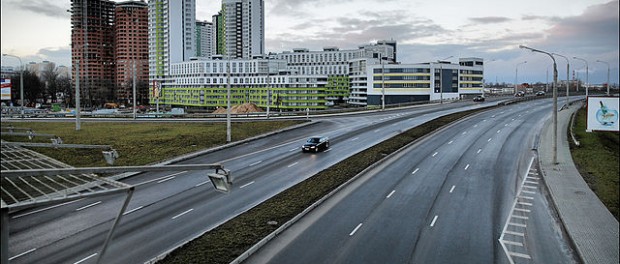The office market in Minsk goes ahead quantitatively
but still no qualitative buildings coming up

Last year in Minsk proposal at the office market was growing at a record pace: 19 new offices appeared during the year, with gross leasable area (GLA) of 212,000 square meters. The international company Colliers International indicated in the report of the year, that more than half of this area was related to the offices of class B1, whereas objects of class B2 had dominated in previous years.
“Qualitative growth at the market was primarily due to growth in the number of projects implemented by developers without the application of participatory construction,” the report says.
At the same time, despite on a fast increase of demand and economic difficulties in Russia, the collapse of rental rates for office space, which was predicted by some local analysts in the end of 2013, did not happen in the last year. A reduction of interest rates began in the third quarter. At year-end rates for the high-quality offices in Minsk decreased by 5.8%, while in absolute terms, according to the Colliers International’s report, rental rates were still higher than in many Western countries.
The company estimates that the currency crisis of December 2014 will influence on the Belarusian rental market in 2015. Expected impact is ambiguous, because the manifestation of the crisis in the economy and monetary markets have traditionally led to lower interest rates in terms of dollars or euro. Now there are quite a lot of projects at the market, which were implemented with the assistance of loans in foreign currency that developers need to repay also in the foreign currency. It may deter from the sharp decline of rents and reinsure against possible dumping in the negotiation process of owners and tenants. “The least qualitative objects or disadvantageously located objects will need to lower rates significantly,” the experts say.
Colliers International said that in the first half of 2014 there was a sustained high demand for office space, places in the objects introduced in late 2013 were quite successfully filling. Since the second half of 2014 the activity of tenants had fallen slightly, and the objects introduced in 2014 had position at the market longer. The owners were forced to make an effort and apply different marketing steps to stimulate demand.
“In general, with the continuing high demand on small office spaces, which is usual for our market for a long time, the number of applications for premises over 1,000 square meters and in the range of 500-1000 square meters was increased. It indicates about changing of the structure of demand and the development of new trends among tenant companies,” the company noted.
In the current situation regarding the demand, it can be stated that for the large international companies it has not changed quantitatively — business conditions of the lease are changing. Local small tenants look for cheaper and smaller offices and it is reflected primarily in the offices of class B2, experts say.
There is a high probability that in 2015 the growth of the number of office space will continue to increase rapidly: objects that have built since 2014 will be administered (many of them are in a high degree of readiness), plus significant amounts of space were announced by developers in 2015. Among the projects, which are expected to be put on to the market in 2015, in contradistinction to 2014, office buildings of class B2 will dominate. At the same time, there are two objects in the number of applications, whose location and preliminary design parameters are predicted as objects of class A. Thus, it is expected insignificant change of the qualitative composition of the market.
“However, despite the significant quantitative increase of offices in Minsk, there are still no qualitative buildings coming up with the modern progressive trends,” Colliers International summarized. “Moreover, it can be stated that the quality of constructed objects at the office market does not develop dynamically: Soviet approaches to the design of structural elements of the building are still popular, the architecture has a lot of subjectivity and little economy.”
As a result of this approach, experts complain that some large foreign companies cannot find an office in Minsk, suited to their current requirements. Among the positive changes in the newly office objects they note: the inclusion of additional services and associated facilities (catering, spa and fitness, etc.); more competent registration of entrance, lounge and reception area; using of different access systems and control systems of elevators; more advanced engineering systems and building management; appearance of bicycle parking.
Text and pictures by TUT.BY, Wikipedia Commons






Leave a comment